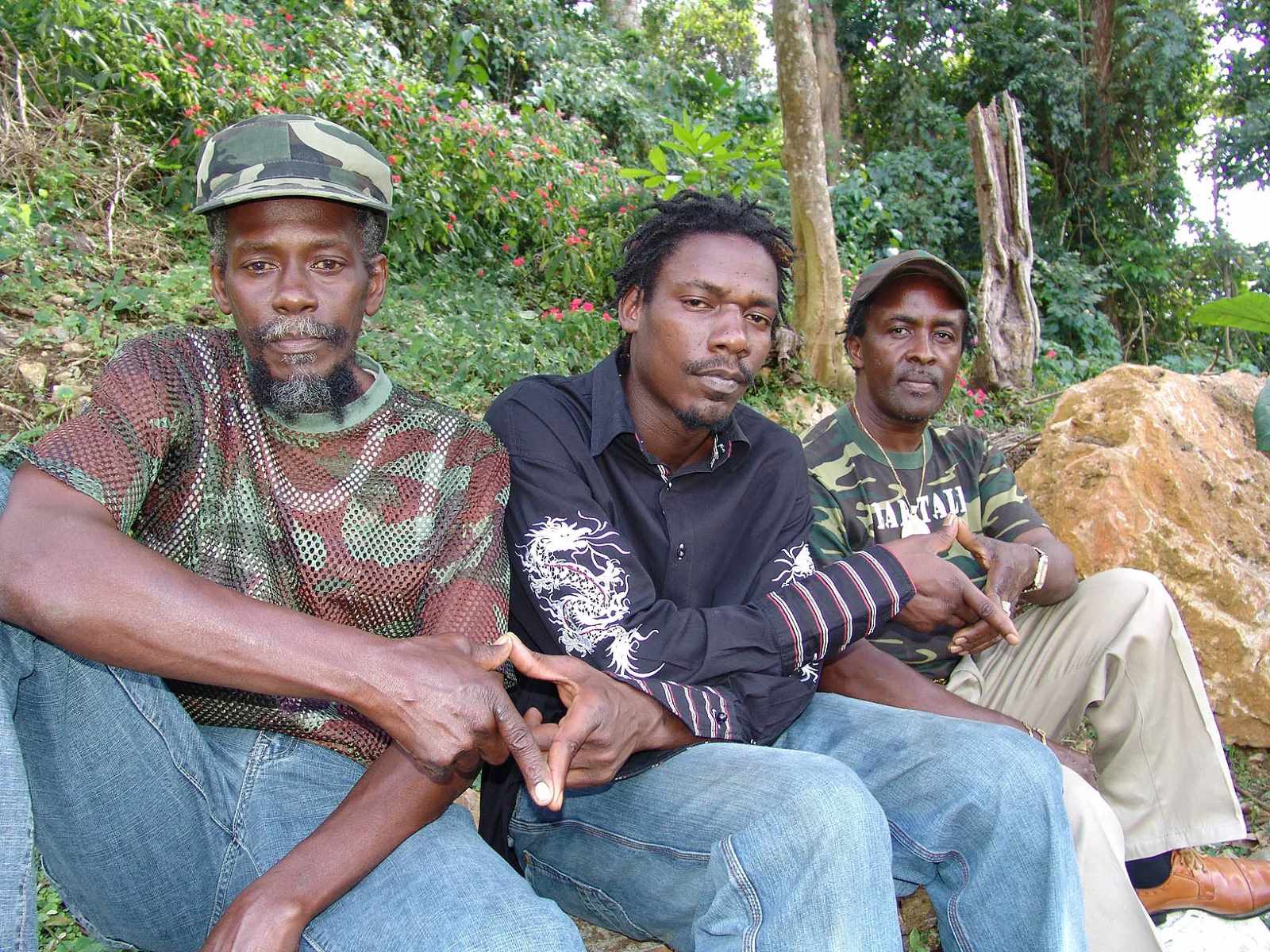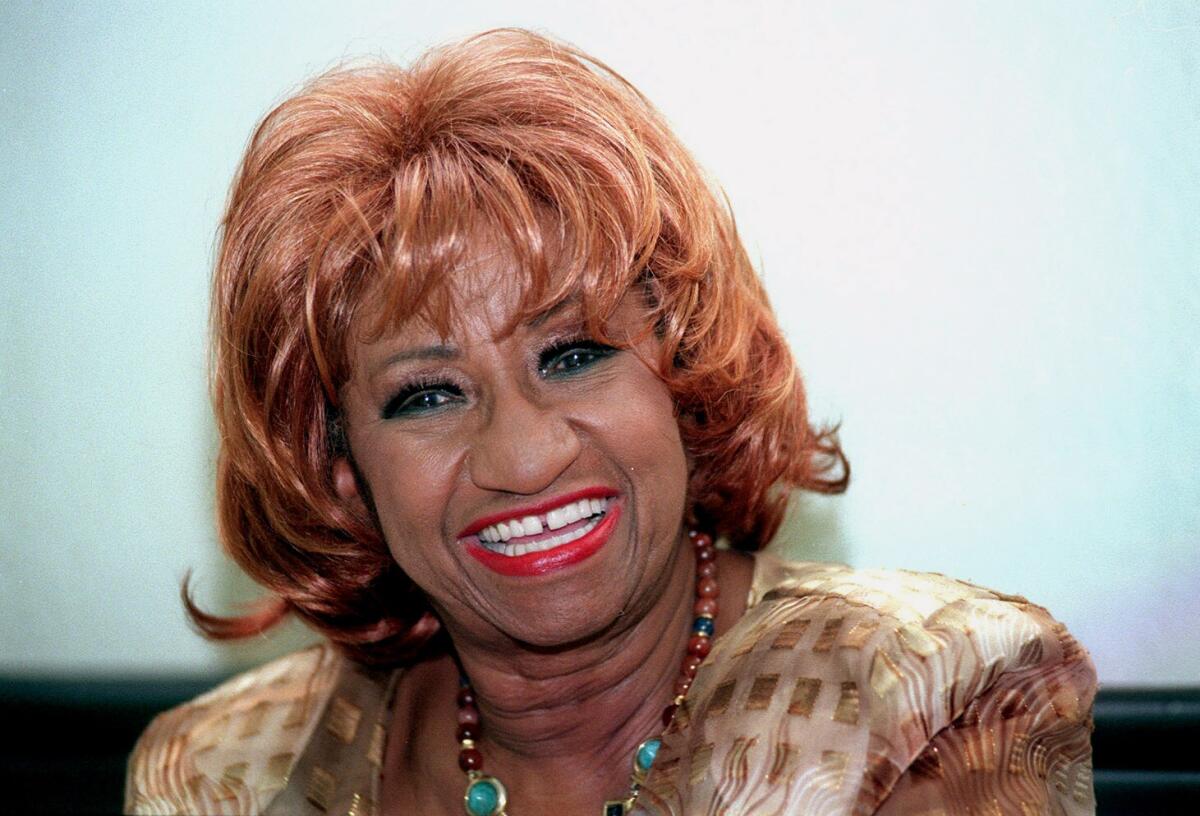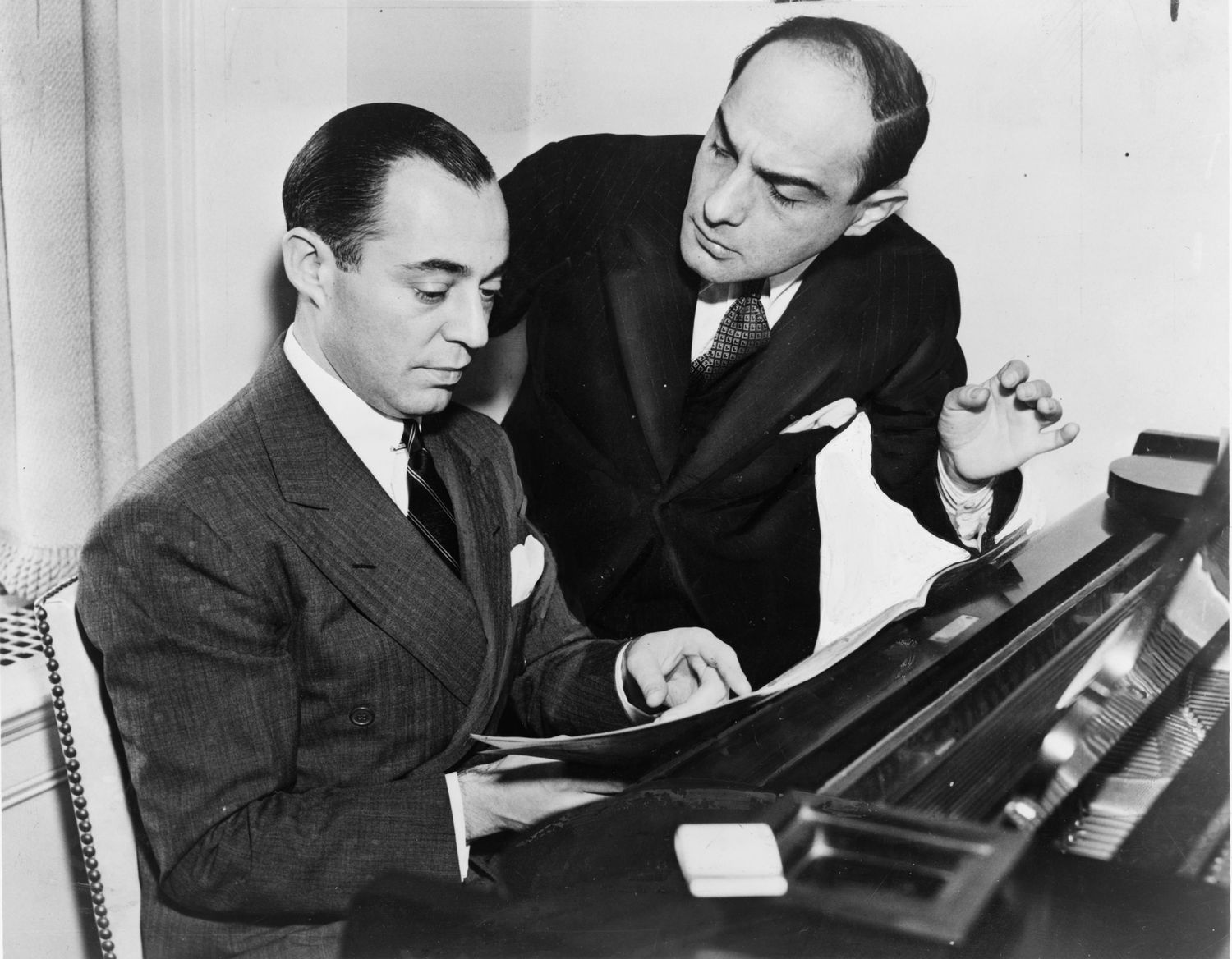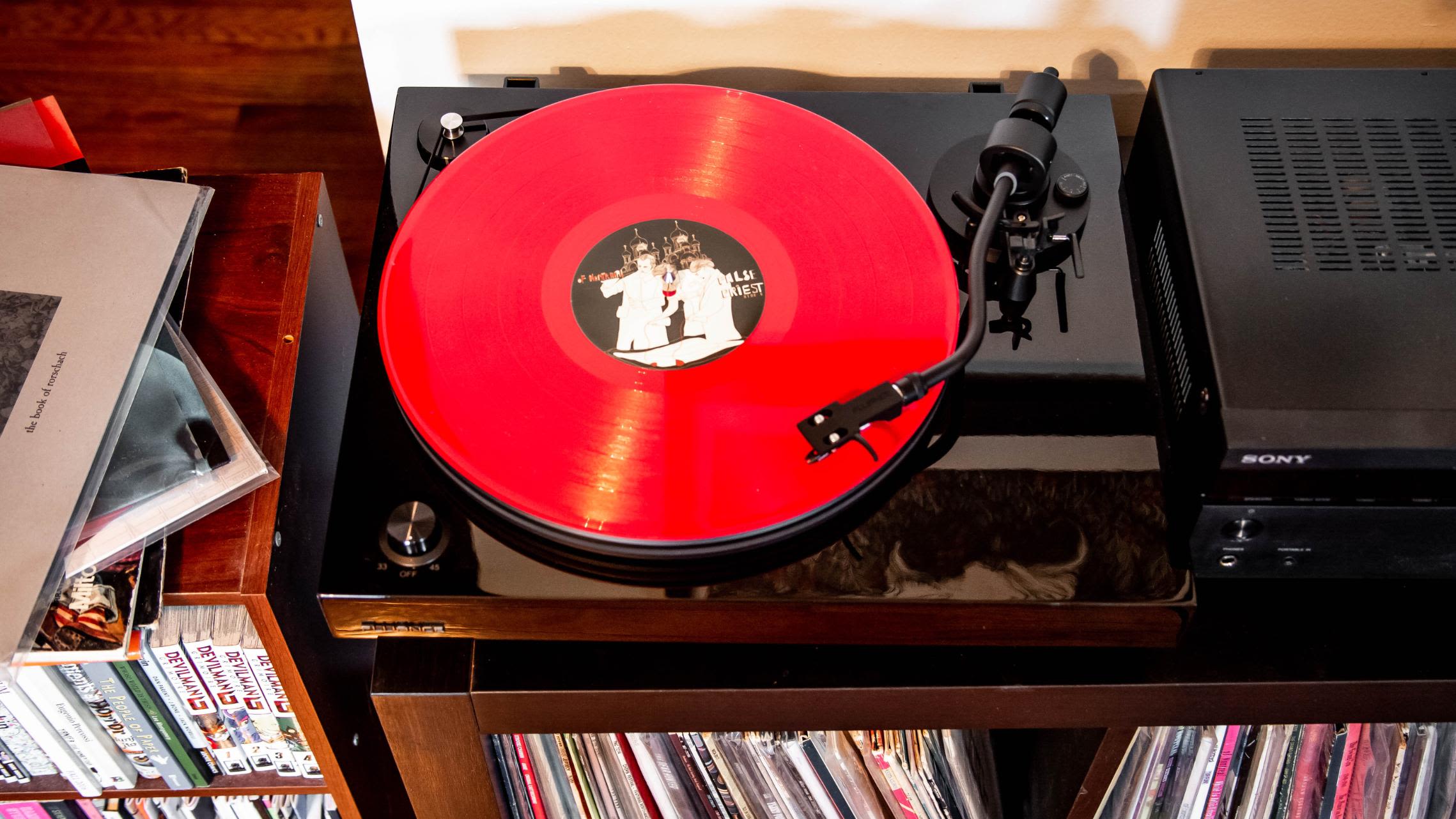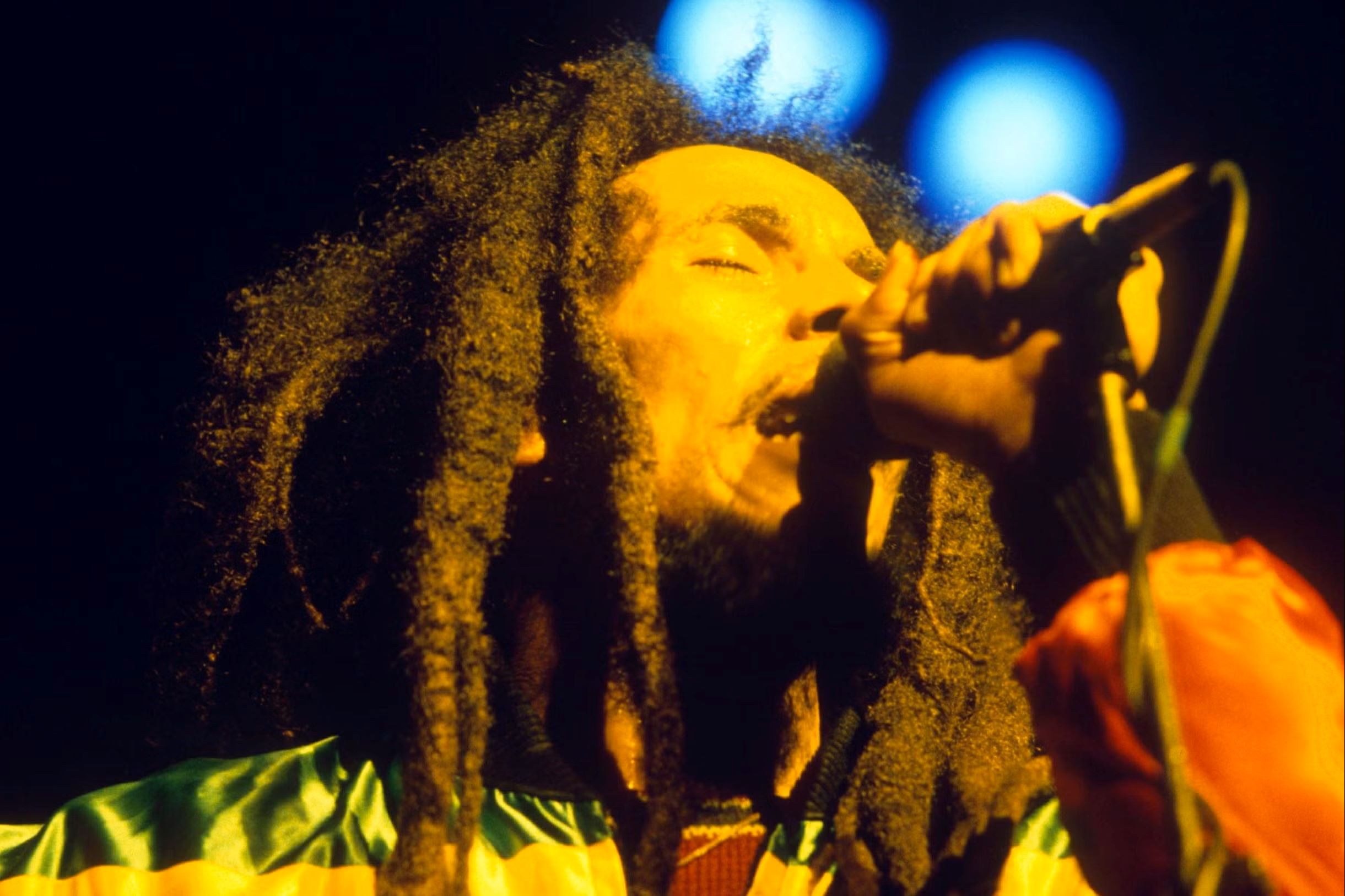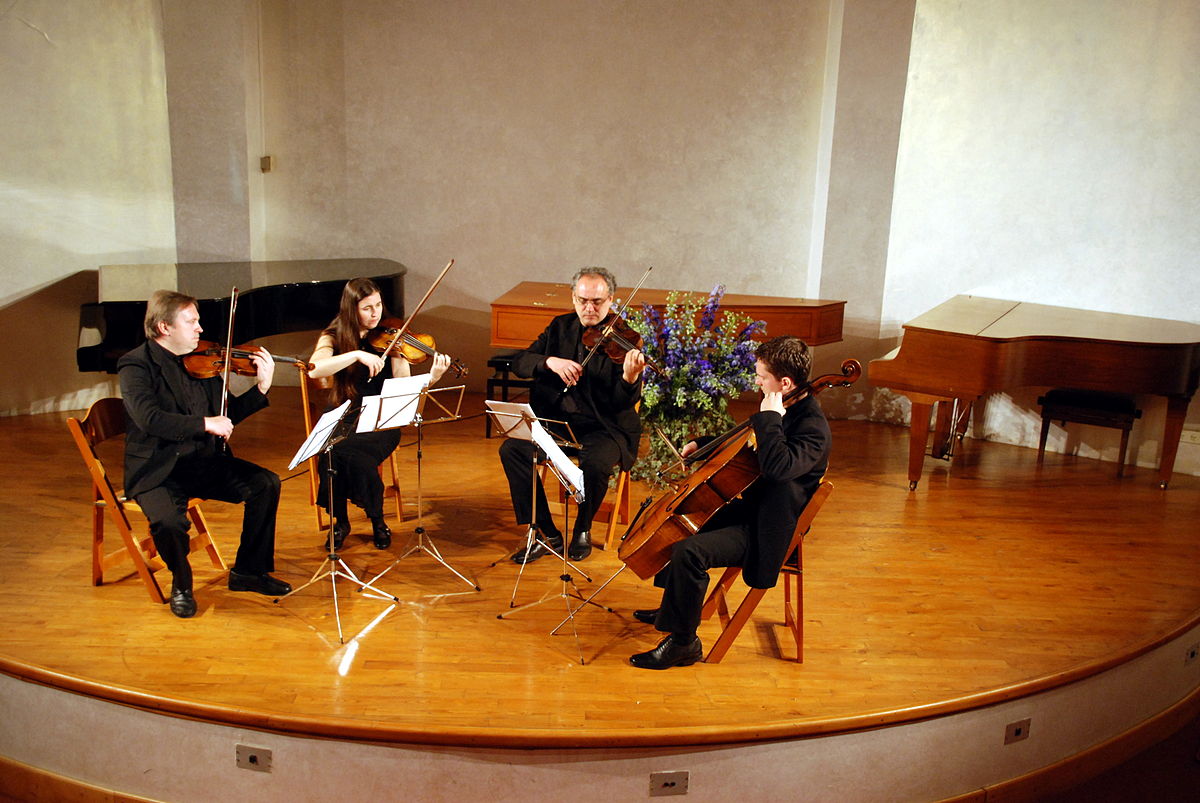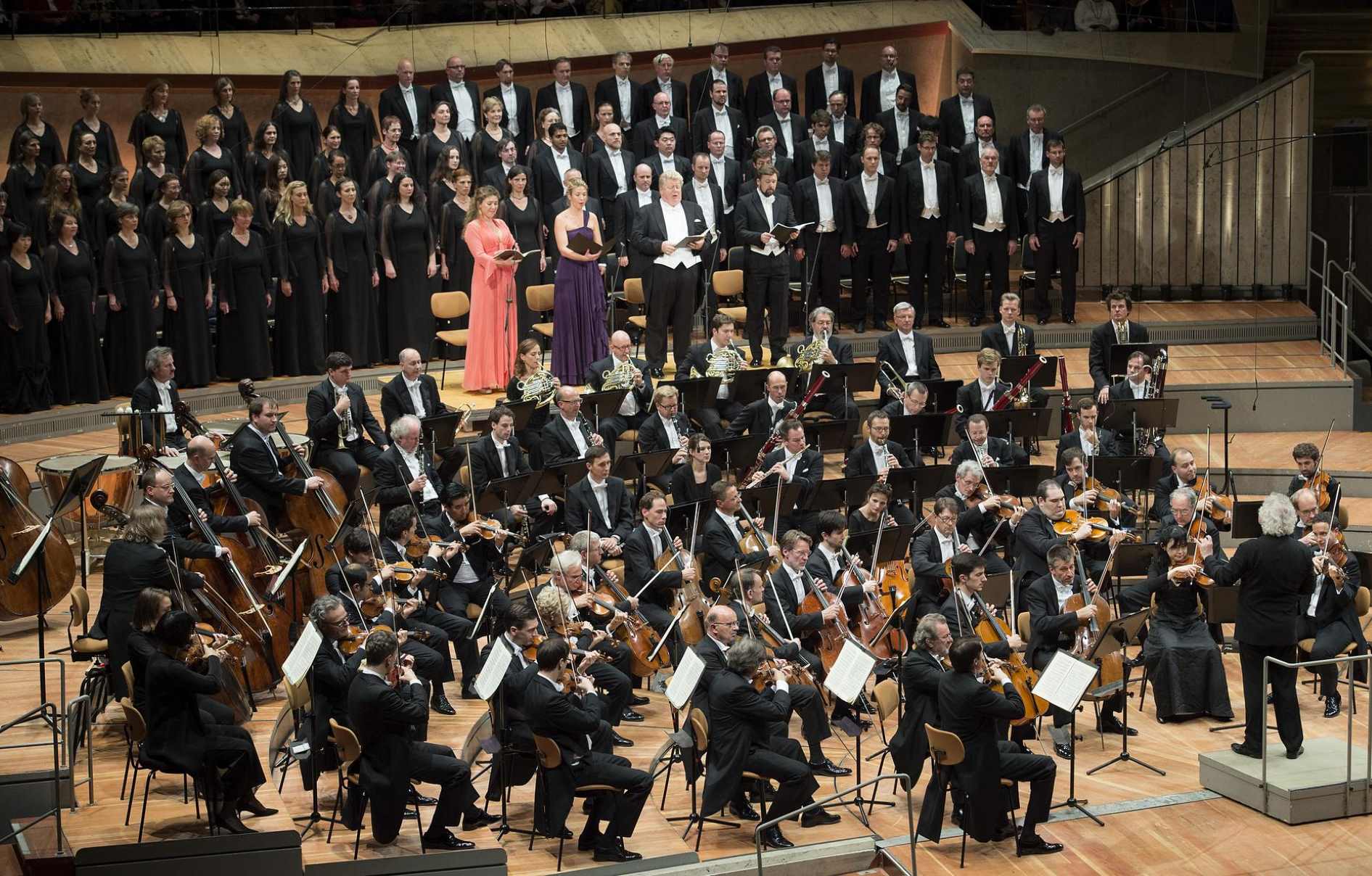Home>Genres>Reggae>What Are The Common Threads Between The Merengue, Salsa, Rumba, Samba, Calypso, Soca, And Reggae


Reggae
What Are The Common Threads Between The Merengue, Salsa, Rumba, Samba, Calypso, Soca, And Reggae
Modified: February 15, 2024
Discover the common threads between the vibrant genres of Merengue, Salsa, Rumba, Samba, Calypso, Soca, and Reggae, and dive into the rhythmic world of Reggae music
(Many of the links in this article redirect to a specific reviewed product. Your purchase of these products through affiliate links helps to generate commission for AudioLover.com, at no extra cost. Learn more)
Table of Contents
Introduction
Reggae is a genre of music that is deeply rooted in Caribbean culture and has gained popularity worldwide. Its rhythmic beats, soulful melodies, and powerful lyrics have made it a unique and influential genre. But what many people may not realize is that reggae shares common threads with other Caribbean music styles such as merengue, salsa, rumba, samba, calypso, and soca. Despite each of these genres having their own distinct characteristics, they are connected by historical, cultural, and musical elements that have influenced and shaped Caribbean music as a whole.
The Caribbean region, with its rich cultural diversity and historical background, has been the breeding ground for various musical genres. The African diaspora, European colonialism, and indigenous influences have all played a significant role in the evolution of these genres. Whether through the slave trade, cultural exchange between different communities, or the blending of musical elements, the Caribbean has been a melting pot of musical traditions.
While each genre has its own unique identity and sound, they share common features and principles. These include the rhythmic patterns, danceable beats, and the use of percussive instruments such as drums, shakers, and tambourines. Additionally, the use of call and response vocals, storytelling lyrics, and the celebration of Caribbean culture are elements that can be found in each of these genres.
Another commonality is the importance of community and social gatherings. These genres were often performed during festivals, parties, and community events, serving as a means of cultural expression, togetherness, and celebration. The lively and infectious rhythms of merengue, salsa, rumba, samba, calypso, soca, and reggae have the power to bring people together, create a sense of unity, and instill a feeling of joy and positivity.
Furthermore, these genres have also been vehicles for social and political commentary. They have been used to express the struggles, resilience, and aspirations of the Caribbean people. From reggae’s powerful messages of social justice and equality to calypso’s satirical and often political lyrics, these genres have provided a platform for artists to voice their opinions and shed light on important issues.
Overall, the connection between merengue, salsa, rumba, samba, calypso, soca, and reggae runs deep. They are all part of the rich tapestry of Caribbean music, each contributing its own unique flavor and telling its own story. Whether you find yourself swaying to the infectious rhythms of salsa or feeling the deep bass lines of reggae, these genres share a common heritage and continue to captivate audiences around the world.
Merengue
Merengue is a lively and energetic music and dance style that originated in the Dominican Republic. It is characterized by its fast-paced rhythms, syncopated drum patterns, and accordion melodies. The roots of merengue can be traced back to the fusion of African and European musical traditions, resulting in a unique and vibrant genre.
The dance associated with merengue is equally energetic, with couples moving in a close embrace and performing intricate footwork. It is a social dance that brings people together and creates a sense of community and celebration.
Merengue has had a significant cultural impact in the Dominican Republic and has become a symbol of national identity. It is often performed at festivals, weddings, and other social gatherings, where it brings people of all ages and backgrounds onto the dance floor.
In recent years, merengue has also gained international recognition, with artists such as Juan Luis Guerra and Elvis Crespo incorporating elements of pop and other genres into their music. This fusion has helped to expand the appeal of merengue beyond its traditional boundaries and introduce it to new audiences around the world.
Overall, merengue is a vibrant and energetic genre that embodies the spirit of the Dominican Republic. Its infectious rhythms and lively dance moves make it a beloved musical style that continues to thrive both within the Caribbean region and beyond.
Salsa
Salsa is a dynamic and passionate genre of music and dance that originated in the Caribbean, particularly in Cuba and Puerto Rico. It is the product of a fusion of Afro-Cuban rhythms, jazz influences, and Latin American musical traditions. Salsa is characterized by its infectious percussion, lively brass section, and syncopated rhythms.
The dance associated with salsa is a lively and energetic partner dance that involves intricate footwork, spins, and body movements. It is a social dance that encourages interaction, connection, and improvisation between dancers. Salsa has become immensely popular worldwide, with salsa clubs, festivals, and competitions attracting enthusiasts of all backgrounds.
Salsa music often tells stories of love, passion, and cultural experiences. It is a genre that embraces diversity and celebrates the spirit of community. Lyrically, salsa songs can be emotional and heartfelt, and they often serve as a means of expression and social commentary.
What sets salsa apart from other Caribbean music styles is its global influence. Over the years, salsa has incorporated elements from various musical genres such as jazz, rock, and hip-hop, giving it a unique and evolving sound. This fusion of styles has contributed to its widespread popularity, with salsa artists and bands emerging from different parts of the world.
From the streets of Havana to the clubs of New York City, salsa has transcended borders and brought people together through its vibrant rhythms and passionate dance. It has become a symbol of Latin American culture and heritage, uniting people of all backgrounds and fostering a sense of unity and inclusivity.
Whether you’re dancing to the infectious beats of salsa or listening to its melodic tunes, this genre is sure to ignite your spirit, make you move, and bring a sense of joy and connection. Its universal appeal and ability to transcend language barriers have made salsa a beloved and enduring genre that continues to captivate audiences around the globe.
Rumba
Rumba is an energetic and rhythmic music and dance style that originated in Cuba. It is deeply rooted in African and Afro-Cuban traditions and is known for its infectious percussion, syncopated rhythms, and improvised vocalizations. Rumba is not just a music genre but also a cultural expression that reflects the spirit and vibrancy of the Cuban people.
Rumba is characterized by its call and response vocals, polyrhythmic drumming, and intricate dance movements. The dance is a combination of elegant footwork, hip movements, and expressive gestures. It is a participatory dance style that encourages interaction, spontaneity, and improvisation.
There are three main styles of rumba: Yambú, Guaguancó, and Columbia. Yambú is the slowest and oldest style, often performed as a couple’s dance. Guaguancó is more playful and flirtatious, involving interactions between a male and female dancer. Columbia is the most energetic and showcases solo improvisation with quick footwork and acrobatic movements.
Rumba has been an integral part of Cuba’s cultural heritage and has played a significant role in the development of other Latin music genres such as salsa and Latin jazz. It is a music and dance style that embodies the resilience, spirit, and joy of the people of Cuba.
Despite being deeply rooted in Cuban culture, rumba has also spread to other parts of the world, gaining popularity and influencing musicians and dancers internationally. Its infectious rhythms and expressive nature have captivated audiences worldwide and have become a symbol of Cuban music and cultural identity.
Overall, rumba is a vibrant and dynamic music and dance style that celebrates the rich heritage and spirit of Cuba. It is a genre that transcends boundaries, bringing people together through its captivating rhythms and joyful movements.
Samba
Samba is a lively and rhythmic music and dance style that originated in Brazil, particularly in the vibrant city of Rio de Janeiro. It is deeply intertwined with Brazilian culture and has become synonymous with the country’s identity. Samba is an energetic and infectious genre that combines elements of African rhythms, Portuguese melodies, and indigenous influences.
Samba music is characterized by its syncopated beats, polyrhythms, and vibrant percussion instruments such as the surdo, tamborim, and cuíca. The melodies are often carried by guitars, cavaquinho, and the distinct sound of the berimbau. Samba lyrics often reflect themes of love, social issues, and the celebration of Brazilian culture.
The dance associated with samba is a high-energy and joyful expression of movement. It involves intricate footwork, hip movements, and joyful gestures. Samba dancers showcase their skills in elaborate costumes during carnival parades and street parties, captivating audiences with their synchronized movements and vibrant energy.
Samba has had a significant impact on Brazilian society, serving as a form of cultural expression and a symbol of unity. It is deeply rooted in Brazil’s history and has been used as a means of resistance, celebration, and social commentary. From the favelas of Rio de Janeiro to the grand stages of international samba competitions, samba has brought people together, created a sense of community, and provided a platform for self-expression.
Internationally, samba has gained widespread recognition and has become an icon of Brazilian culture. Its infectious rhythms and vibrant dance movements have inspired musicians, dancers, and spectators around the world. The annual carnival celebrations in Brazil, with their samba parades and performances, attract millions of tourists who come to experience the vibrant and lively atmosphere.
Overall, samba is not just a music and dance style; it is a cultural phenomenon that represents the spirit and passion of Brazil. It is a genre that embodies joy, unity, and cultural pride. Whether you’re dancing to the beat of the drums or enjoying the melodic tunes, samba has the power to transport you to the vibrant streets of Brazil and immerse you in its rich cultural heritage.
Calypso
Calypso is a vibrant and rhythmic music genre that originated in the Caribbean, particularly in Trinidad and Tobago. It has deep roots in African and African-Caribbean traditions and has evolved over the years to become a distinctly Caribbean art form. Calypso is characterized by its catchy melodies, witty lyrics, and lively rhythms.
Originally, calypso served as a form of communication and storytelling for the enslaved African population in Trinidad. It was a means of expressing their frustrations, hopes, and desires while also providing entertainment during festivities and celebrations. Through its satirical and often political lyrics, calypso became a platform for social commentary and resistance against oppression.
The rhythm of calypso is often driven by percussive instruments such as the steel pan, drums, and shakers. The melodies are typically carried by guitars, bass, and brass instruments. Calypso dancers, known as “limbo dancers,” showcase their skills in high-energy performances, bending their bodies to the rhythm of the music in a test of flexibility and agility.
In addition to its historical context, calypso has also influenced and been influenced by various genres such as jazz, reggae, and soca. The infusion of different musical elements has allowed calypso to evolve and remain relevant throughout the years.
Internationally, calypso gained popularity in the mid-20th century through artists such as Harry Belafonte, who brought the genre to a global stage with hits like “Day-O (The Banana Boat Song)”. The infectious melodies and uplifting nature of calypso resonated with audiences around the world, introducing them to the vibrant sounds of the Caribbean.
Calypso continues to be celebrated in Trinidad and Tobago during their annual carnival festivities, with calypso competitions and performances taking center stage. It has also influenced other Caribbean music genres such as soca, which emerged as a fusion of calypso and Indian rhythms.
Overall, calypso is more than just a music genre; it is a cultural expression that represents the history, resilience, and creativity of the Caribbean people. With its lively rhythms, humorous and thought-provoking lyrics, and infectious spirit, calypso remains a beloved genre that captures the essence of the Caribbean and its vibrant musical heritage.
Soca
Soca is a vibrant and energetic music genre that originated in the Caribbean, particularly in Trinidad and Tobago. It is a fusion of calypso, African rhythms, and Indian musical influences. Soca stands for “soul of calypso” and is characterized by its fast-paced beats, infectious melodies, and high-energy performances.
Soca emerged in the late 1970s as a response to the growing popularity of disco music. It incorporated elements of calypso, soul, funk, and reggae to create a fresh and exciting sound. Soca’s lyrics often focus on celebrating life, love, and the joyous spirit of the Caribbean.
The rhythm of soca is driven by percussive instruments like the steel pan, drums, and electronic synthesizers. Its catchy melodies and infectious beats create a festive and upbeat atmosphere that is perfect for dancing and celebrating. Soca dance moves are characterized by high-energy movements, waistline gyrations, and intricate footwork.
Soca music has become synonymous with Trinidad carnival, the largest street party in the Caribbean. During carnival season, soca artists compete in various competitions, showcasing their talents and vying for the title of the year’s best soca song.
Internationally, soca has gained significant popularity and has found its way into the mainstream music scene. Artists like Machel Montano, Kes, and Bunji Garlin have taken soca to the global stage, collaborating with international artists and infusing soca with elements of pop, dancehall, and EDM.
Soca music has a magnetic quality that draws people together and creates a sense of unity and celebration. It has the power to energize and uplift, making it a beloved genre for parties, festivals, and any joyful occasion.
Overall, soca is a genre that embodies the vibrancy, energy, and cultural heritage of the Caribbean. With its infectious beats, captivating melodies, and feel-good lyrics, soca continues to evolve and captivate audiences worldwide, spreading the joyous spirit of the Caribbean to music lovers everywhere.
Reggae
Reggae is a genre of music that originated in Jamaica in the late 1960s. It is characterized by its distinctive rhythmic patterns, soulful melodies, and powerful lyrics. Reggae grew out of various influences, including traditional Jamaican music such as mento and ska, as well as American rhythm and blues. The genre gained international recognition through the iconic works of Bob Marley, who became a global ambassador for reggae.
The rhythmic foundation of reggae is provided by the bass guitar and drums, with the emphasis placed on the off-beat or “skank.” This unique rhythm creates a laid-back and hypnotic groove that is instantly recognizable. The use of electric guitars and keyboards adds layers of melody and harmony to the music.
The lyrics of reggae often focus on themes of social justice, political commentary, spirituality, and love. The music serves as a powerful platform for expressing the struggles and realities of life, as well as promoting unity, peace, and the pursuit of equality. Reggae’s messages of empowerment and social consciousness have resonated with listeners around the world.
In addition to its musical elements, reggae is also closely associated with the Rastafarian movement, which originated in Jamaica. Rastafarian beliefs, including the worship of Emperor Haile Selassie I of Ethiopia as the incarnation of God, have had a profound influence on reggae. The lyrics often reflect Rastafarian philosophy, spirituality, and calls for social change.
Reggae has had a significant impact on popular culture and has been embraced by audiences worldwide. Its positive and uplifting vibes have transcended borders, inspiring artists from different musical backgrounds and genres. Reggae fusion, a blending of reggae with other styles such as rock, pop, and hip-hop, has further expanded the genre’s reach and influence.
Today, reggae remains a powerful force in music, continuing to evolve and inspire new generations of artists and listeners. From the sunny beaches of Jamaica to concert halls around the globe, reggae’s infectious rhythms and heartfelt lyrics have the power to unite people, spread love and positivity, and serve as a catalyst for change.
Conclusion
Throughout the Caribbean, music serves as an essential part of the cultural fabric, reflecting the history, struggles, and celebration of the diverse communities that call this region home. From merengue and salsa in the Dominican Republic, rumba in Cuba, samba in Brazil, calypso in Trinidad and Tobago, soca in the Caribbean, to reggae in Jamaica, these genres share common threads that connect them to the rich musical tapestry of the Caribbean.
While each genre has its unique characteristics, they are united by their origins in African and Afro-Caribbean traditions, their infectious rhythms, and their ability to bring people together in celebration. These musical styles have evolved and adapted over time, influenced by various cultural and musical influences, resulting in the vibrant and diverse genres we know today.
Furthermore, these genres also share a cultural and historical significance. They have served as vehicles for social and political commentary, conveying messages of resistance, empowerment, love, and unity. Through their lyrics and performances, artists have expressed the joys and struggles of their communities, providing a voice to the marginalized and promoting cultural pride.
The influence of these genres extends beyond the Caribbean, reaching a global audience and inspiring countless musicians, dancers, and music enthusiasts around the world. From the iconic sound of reggae to the infectious rhythms of salsa and the energetic movements of samba, Caribbean music has made a lasting impact on the global music scene.
As we explore the common threads that connect merengue, salsa, rumba, samba, calypso, soca, and reggae, we gain a deeper appreciation for the cultural heritage and diversity of the Caribbean. These genres have provided a platform for cultural expression, celebration, and resistance, resonating with people across borders, races, and languages.
From the streets of Havana to the beaches of Trinidad, the sounds of the Caribbean continue to captivate and inspire. They reflect the spirit, resilience, and creativity of the people who have shaped these genres over generations. So, whether you find yourself dancing to the rhythms of merengue, salsa, samba, calypso, soca, or reggae, remember that you are tapping into a rich musical legacy that has transcended time and continues to bring joy to millions of people worldwide.


